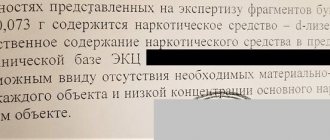1. Vandalism, that is, desecration of buildings or other structures, damage to property on public transport or in other public places, -
shall be punishable by a fine in the amount of up to forty thousand rubles, or in the amount of the wages or other income of the convicted person for a period of up to three months, or by compulsory labor for a term of up to three hundred sixty hours, or by corrective labor for a term of up to one year, or by arrest for a term of up to three months.
2. The same acts committed by a group of persons, as well as for reasons of political, ideological, racial, national or religious hatred or enmity, or for reasons of hatred or enmity against any social group, -
shall be punishable by restriction of freedom for a term of up to three years, or forced labor for a term of up to three years, or imprisonment for the same term.
- Article 213. Hooliganism
- Article 215. Violation of safety rules at nuclear energy facilities
Commentary to Art. 214 of the Criminal Code of the Russian Federation
The main object of vandalism is relations to protect public order.
An additional object is relations for the protection of public morality and property.
Subject of the crime:
1) buildings and structures. Buildings - residential buildings, buildings of enterprises and institutions, churches, shops, libraries, clinics, etc. Structures - public transport stops, sculptural compositions, payphones, advertising stands, etc.;
2) property on public transport, in other public places (subway cars, seats, handrails of public transport, benches in parks, squares, in local areas, advertising banners, property of cinemas, clubs, museums, etc.). Monuments of history and culture (Article 243 of the Criminal Code of the Russian Federation), gravestones, cemetery buildings, burial places of the dead (Article 244 of the Criminal Code of the Russian Federation), personal vehicles (Article 167 of the Criminal Code of the Russian Federation) are not subject to vandalism.
The Russian language dictionary defines vandalism as the senselessly cruel destruction of historical monuments and cultural values, barbarism. This crime was structurally separated from hooliganism; before the adoption of the Criminal Code of the Russian Federation, such actions were qualified as criminal hooliganism.
The objective side of the crime consists of committing such actions as: 1) desecration of buildings or other structures; 2) damage to property on public transport or in other public places.
The term “defilement” means disgrace, exposure to reproach, humiliation. The actions of vandals consist of applying inscriptions, drawings of cynical, obscene images to buildings and structures, staining them with sewage, etc.
“Damage” means damage, rendering unusable property in public transport, in other public places (cut up seats, bent handrails, torn out payphone tubes, burnt mailboxes, broken benches). Damage is also the application of inscriptions and drawings on buildings, fences, barriers in public places that do not offend public morals, for example graffiti, inscriptions of political or religious content. In Art. 214 of the Criminal Code of the Russian Federation does not indicate the amount of damage caused by the damage. From the standpoint of the theory of criminal law, this means that this circumstance does not affect qualifications. At the same time, if there are signs of a clearly minor act, as defined in Part 2 of Art. 14 of the Criminal Code of the Russian Federation, it is necessary to state the absence of this crime.
When committing such actions in places that are not public, for example, destroying the fence of a country house, drawing drawings on the veranda of a private cottage, the actions are qualified if there is evidence of significant damage under Art. 167 of the Criminal Code of the Russian Federation.
The corpus delicti is formal, the act is completed from the moment of desecration of property, its damage.
The subjective side of the crime is characterized by direct intent. The motive for the action is not specified in the disposition of the article, but it can only be hooliganism. In some cases, only a motive allows one to distinguish vandalism from crimes against property. For example, the culprit tore out a seat in a bus. With hooligan motives, actions form part of vandalism, with mercenary motives - theft of someone else's property.
The general subject of the crime is a sane person who has reached fourteen years of age.
Part 2 of Art. 214 of the Criminal Code of the Russian Federation establishes stricter criminal liability for vandalism committed by a group of persons (Part 1 of Article 35 of the Criminal Code of the Russian Federation - a group of persons without prior conspiracy), as well as for reasons of political, ideological, racial, national or religious hatred or enmity, or for reasons hatred or hostility towards any social group. It should be noted that vandalism committed with other forms of complicity should be qualified under Part 1 of Art. 214 of the Criminal Code of the Russian Federation, which, in our opinion, will not correspond to a fair solution to the issue of criminal liability.
Vandalism committed for reasons of political, ideological, racial, national or religious hatred or enmity, or for reasons of hatred or enmity against any social group, should be distinguished from hooliganism committed for the same reasons. Vandalism not only violates public order, but also causes damage to property through desecration of buildings and other structures, damage to property in transport or other public places. In cases where, along with vandalism (Article 214 of the Criminal Code of the Russian Federation), a person commits hooliganism, liability for which is provided for in Art. 213 of the Criminal Code of the Russian Federation, the act should be qualified according to the totality of the named articles of the Criminal Code of the Russian Federation.
———————————
See: paragraph 15 of the Resolution of the Plenum of the Supreme Court of the Russian Federation of November 15, 2007 N 45 “On judicial practice in criminal cases of hooliganism and other crimes committed out of hooligan motives” // Bulletin of the Supreme Court of the Russian Federation. 2008. N 1.
Where does it follow that Article 214 of the Criminal Code vandalism has only direct intent?
An answer was given Reply from 08/10/2014 10:11
Article 214 of the Criminal Code of the Russian Federation. Vandalism.
1. Vandalism, that is, desecration of buildings or other structures, damage to property on public transport or in other public places, is punishable by a fine in the amount of up to forty thousand rubles or in the amount of the wages or other income of the convicted person for a period of up to three months, or by compulsory labor. for a term of up to three hundred and sixty hours, or correctional labor for a term of up to one year, or arrest for a term of up to three months.
2. The same acts committed by a group of persons, as well as for reasons of political, ideological, racial, national or religious hatred or enmity, or for reasons of hatred or enmity towards any social group, are punishable by restriction of freedom for a term of up to three years, or forced labor for a term of up to three years, or imprisonment for the same period.
According to other sources
Comments from a lawyer on the legality of advertising on asphalt.
The installation and operation of an advertising structure is carried out by its owner under an agreement with the owner of the land plot, building or other real estate to which the advertising structure is attached, or with a person authorized by the owner of such property, including the tenant (Part 5, Article 19). According to the laws of the Russian Federation, asphalt pavement, on the one hand, has all the criteria for real estate and, moreover, in some regions of Russia it is registered as such. And any real estate has an owner who has the right to place advertising on this asphalt.
But in Moscow and St. Petersburg, for example, it is not clear who owns the asphalt and, accordingly, who has the right to recover damages from you in the event of unauthorized advertising. And it will be unauthorized only when you have an agreement to place advertising or to rent this asphalt surface. It turns out that there was a legal incident with advertising on asphalt: according to market participants, it is legal, but according to officials, there are regulations that prohibit this type of advertising activity. But there is no ban on advertising on asphalt. The Federal Law on Advertising does not contain a direct ban on this type of advertising; the Code of Administrative Offenses provides for liability in the form of a fine, but only for placing advertising without proper permission, which again leads us to the question: who should issue such permission if this type of advertising is not provided.
According to GOST R 52044-2003 Outdoor advertising on highways and territories of urban and rural settlements, advertising by application or inclusion using building materials, paint, road markings, etc. is not allowed. into the surface of roads and streets. Traffic police officers must monitor compliance with this GOST. However, lawyers are confident that GOST standards cannot ban advertising on asphalt. GOST standards are lower in legal force than federal laws, and the federal law on advertising does not contain this ban on placing advertising on asphalt.
Who to believe?
Judicial practice under Article 214 of the Criminal Code of the Russian Federation
Appeal ruling of the Judicial Collegium for Criminal Cases of the Supreme Court of the Russian Federation dated 03/06/2019 N 5-APU19-16
to the competent authorities of the Republic of Belarus to bring him to criminal liability under Part 2 of Art. 205 and part 1 of Art. 214 of the Criminal Code of the Republic of Belarus. After hearing the report of judge Shmotikova S.A., the speech of Rylev A.V. and lawyer S.A. Khokhlov, who supported the arguments of the complaint, as well as the opinion of the prosecutor of the General Prosecutor's Office of the Russian Federation L.V. Shchukina. on leaving the decision unchanged, Judicial Collegium
Resolution of the Presidium of the Supreme Court of the Russian Federation dated March 6, 2019 N 186-P18
Chernova Natalya Yurievna, ... was detained on December 14, 2004 in accordance with Art. Art. 91, 92 of the Code of Criminal Procedure of the Russian Federation on suspicion of committing crimes under Part 2 of Art. 167, art. 214, art. 278 of the Criminal Code of the Russian Federation. By the decision of the judge of the Khamovnichesky District Court of Moscow dated December 17, 2004, Chernova N.Yu. a preventive measure in the form of detention was chosen.
Appeal ruling of the Judicial Collegium for Criminal Cases of the Supreme Court of the Russian Federation dated March 26, 2019 N 51-APU19-5
Convicted under paragraph “g” of Part 2 of Art. 105 of the Criminal Code of the Russian Federation to 15 years in prison with restriction of freedom for 2 years, under Part 2 of Art. 214 of the Criminal Code of the Russian Federation to 1 year of restriction of freedom. Based on Part 3 of Art. The Criminal Code of the Russian Federation for the totality of crimes by partial addition of punishments finally imposed 15 years and 2 months of imprisonment with restriction of freedom for 2 years with the main sentence being served in a high-security correctional colony.
Appeal ruling of the Judicial Collegium for Criminal Cases of the Supreme Court of the Russian Federation dated October 22, 2019 N 5-APU19-74
examined in open court the material on the appeal of lawyer A.A. Baranov, filed in defense of the interests of V.V. Salamatin, against the decision of the Moscow City Court dated August 23, 2021, which recognized the legal and justified resolution of the Deputy Prosecutor General of the Russian Federation dated 11 July 2021 on extradition to the competent authorities of the Republic of Belarus for criminal prosecution under Part 2 of Art. 209, part 1, 2 art. 214 of the Criminal Code of the Republic of Belarus
Appeal ruling of the Judicial Collegium for Criminal Cases of the Supreme Court of the Russian Federation dated July 18, 2018 N 5-APU18-24
By the resolution of the Deputy Prosecutor General of the Russian Federation dated April 11, 2021, the request of the Prosecutor General's Office of the Republic of Belarus to extradite Krivulets for prosecution for crimes under Part 1 of Art. 214 and part 2 of Art. 205 of the Criminal Code of the Republic of Belarus.
Judicial practice: sentences and punishment under Art. 214 of the Criminal Code of the Russian Federation
- Resolution of the Plenum of the Supreme Court of the Russian Federation dated... PLENARY OF THE SUPREME COURT OF THE RUSSIAN FEDERATION DECISION dated December 27, 2002 N 29 ON JUDICIAL PRACTICE IN CASES OF THEFT,...
- Resolution of the Plenum of the Supreme Court of the Russian Federation dated... PLENARY OF THE SUPREME COURT OF THE RUSSIAN FEDERATION DECISION of November 15, 2021 N 48 ON THE PRACTICE OF APPLICATION BY COURTS OF LEGISLATION GOVERNING FEATURES...
- Resolution of the Plenum of the Supreme Court of the Russian Federation dated... PLENAUM OF THE SUPREME COURT OF THE RUSSIAN FEDERATION DECISION dated June 25, 2021 N 18 ON JUDICIAL PRACTICE IN CASES OF CRIMES,...
- Resolution of the Presidium of the Supreme Court of the Russian Federation dated... PRESIDIUM OF THE SUPREME COURT OF THE RUSSIAN FEDERATION DECISION dated December 5, 2018 N 126-P18 ON RESUMING PROCEEDINGS IN THE CASE DUE TO NEW...
- Resolution of the Plenum of the Supreme Court of the Russian Federation dated... PLENAUM OF THE SUPREME COURT OF THE RUSSIAN FEDERATION DECISION dated December 17, 2021 N 43 ON SOME ISSUES OF JUDICIAL PRACTICE IN CASES...
- Ruling of the ECtHR dated 02/14/2017 EUROPEAN COURT OF HUMAN RIGHTS THIRD SECTION CASE “MASLOVA VS. RUSSIAN FEDERATION” (Complaint No. 15980/12) JUDGMENT…
- Decision of the Supreme Court: Determination N 203-APU17-21... THE SUPREME COURT OF THE RUSSIAN FEDERATION Case No. 203-APU17-21 APPEAL DECISION Moscow August 31, 2021 Judicial Collegium for Military Personnel of the Supreme...
- Decision of the Supreme Court: Resolution No. 310P13 dated... DECISION OF THE PRESIDIUM OF THE SUPREME COURT OF THE RUSSIAN FEDERATION Case No. 310-P13 Moscow January 23, 2014 Presidium of the Supreme Court of the Russian Federation...
- Decision of the Supreme Court: Determination No. 56-КГ16-46 dated... THE SUPREME COURT OF THE RUSSIAN FEDERATION No. 56-КГ16-46 DETERMINATION Moscow March 6, 2017 Judicial Collegium for Civil Cases of the Supreme Court...
- Decision of the Supreme Court: Determination No. 56-КГ16-46 dated... THE SUPREME COURT OF THE RUSSIAN FEDERATION No. 56-КГ16-46 DETERMINATION Moscow March 6, 2017 Judicial Collegium for Civil Cases of the Supreme Court...
The case of vandalism (Part 1 of Article 214 of the Criminal Code of the Russian Federation) was dismissed due to the lack of corpus delicti
Walking around his hometown at night on one of the New Year's days 2021 with his girlfriend, the young man suddenly quarreled with her, and he came across an illuminated sign of an energy supply organization displaying the operating hours of its office. The guy, expressing his anger, hit the sign with his hand, causing damage to its body, which was recorded by an external surveillance camera.
Based on this fact, a representative of the energy supply organization contacted the police with a demand to bring the culprit to justice.
The identity of the “vandal” was not established, and the police posted a fragment of the video on a social network asking for help in identifying the villain.
However, the villain himself saw this publication and decided to report himself, which he did, because he could not even think that he had done something terrible, criminally punishable.
The young man, his mother and girlfriend were called to the police, they took a confession, and since everything was “in order,” they opened a case under Part 1 of Art. 214 of the Criminal Code of the Russian Federation, were interrogated as suspects, the rest were interrogated as witnesses.
That's it, the crime was solved, the rest is a matter of technology.
On the advice of friends, the young man and his mother turned to me because they did not trust the lawyer they had hired and doubted that such actions (damaging the light sign) constituted vandalism.
Search for practice under Art. 214 of the Criminal Code of the Russian Federation did not bring any consolation.
The crime was absent mainly when it was possible to prove the “validity” of the reasons for damage to buildings and structures, which, in turn, indicated the absence of intent to vandalize. This example, in particular, is described by our colleague, D.I. Bandukov. I was able to find an extremely small number of acquittals (literally another example when the case was returned to the prosecutor from the appeal stage, since the court found Part 1 of Article 167 of the Criminal Code of the Russian Federation there). That's all.
Since I have not encountered such cases, and the truth, as you know, is born in doubt, and I had “through the roof” doubts about the correctness of qualifications, I began to study the issue of delimiting the elements of crimes provided for in Art. 214, 167 and 213 of the Criminal Code of the Russian Federation, as well as related “administrative” structures - 7.17, 13.24, 20.1 of the Code of Administrative Offenses of the Russian Federation.
As a result, a very real picture matured in my head, which I applied in this case, without actually writing anything, but I simply suggested that the client clarify some points in his testimony.
When he was interrogated for the first time, it was January 6, a day off, and in the evening, the guy admitted to damaging the sign... It would seem, what else is needed here?
The interrogation was very brief in terms of explaining the motives for the action taken: “... Due to the fact that we had a conflict, I was angry, freaked out, and with the intention of damaging the sign , I struck one blow on it with my right hand...”. Actually, this is the entire motive for vandalism recorded in the protocol.
A study of judicial practice revealed a huge number of similar cases of damage to advertising signs of trade and credit organizations for much larger amounts than in our case, and which were nevertheless qualified under Art. 7.17 of the Code of Administrative Offenses of the Russian Federation as the intentional destruction or damage of someone else’s property, if these actions did not cause significant damage.
According to note 2 to Art. 158 of the Criminal Code of the Russian Federation, the significance of damage as a sign of theft is considered and imputed only in the case of causing harm to a citizen, and not to a commercial organization.
Tactically, we waited until we were introduced to the materials of the case, and when signing the corresponding protocol, we attached my client’s statement prepared by me with the attachment of examples of judicial practice under Art. 7.17 of the Code of Administrative Offenses of the Russian Federation, in which he stated that he did not agree with the suspicion, did not admit his guilt, clarified that he had no intent to violate public order, and asked to terminate the criminal case.
From April 22, 2021, the case was stuck, and on August 10, 2021 it was terminated under clause 2, part 1 of Art. 24 Code of Criminal Procedure of the Russian Federation. Before this, for some reason the investigator decided to reclassify my client’s actions from Part 1 of Art. 214 on part 1 of Art. 167 of the Criminal Code of the Russian Federation, apparently, it was easier and more convenient for her to justify her decision.
That’s how my piggy bank was replenished with a practical example in a case of vandalism, which ended with a decision rehabilitating the client.








